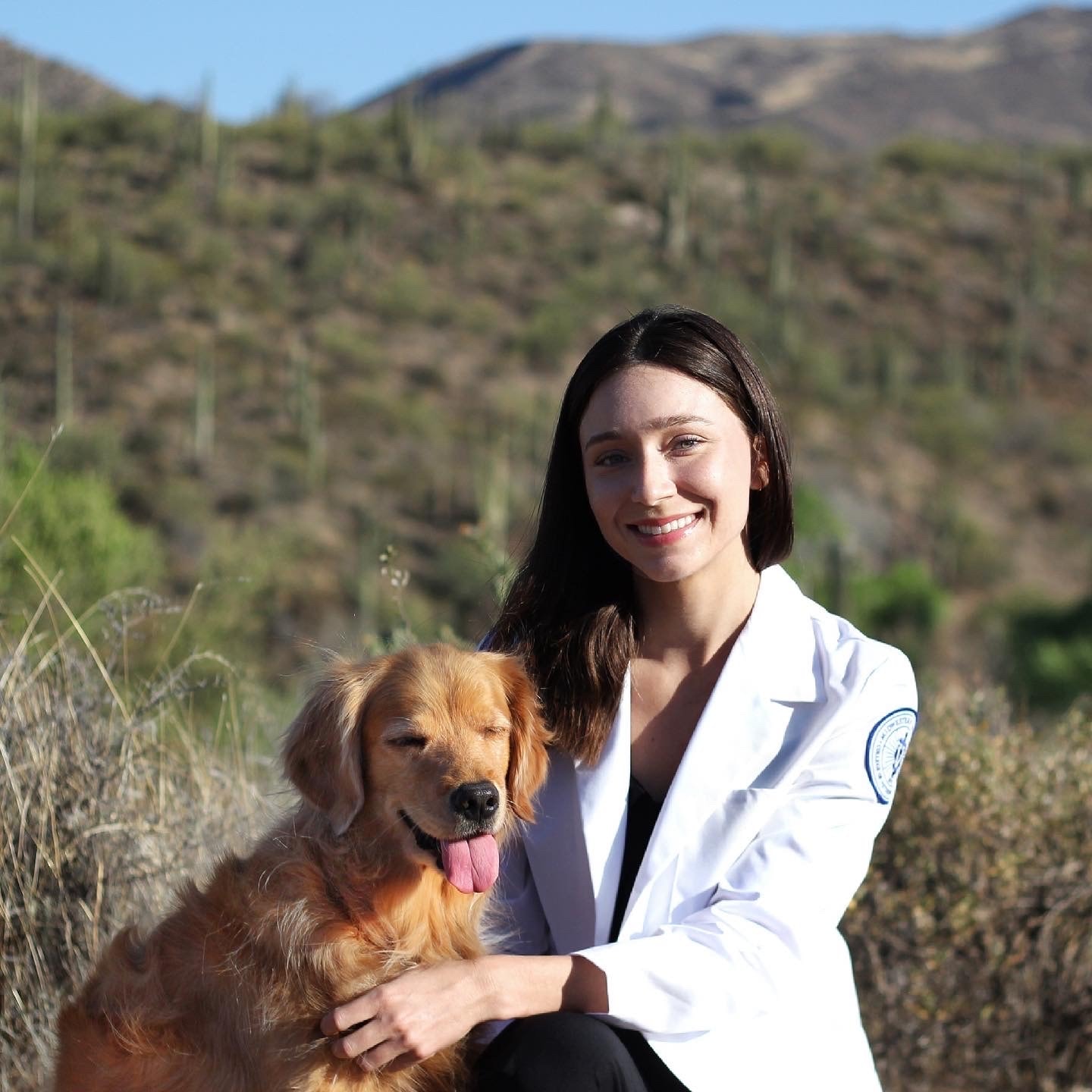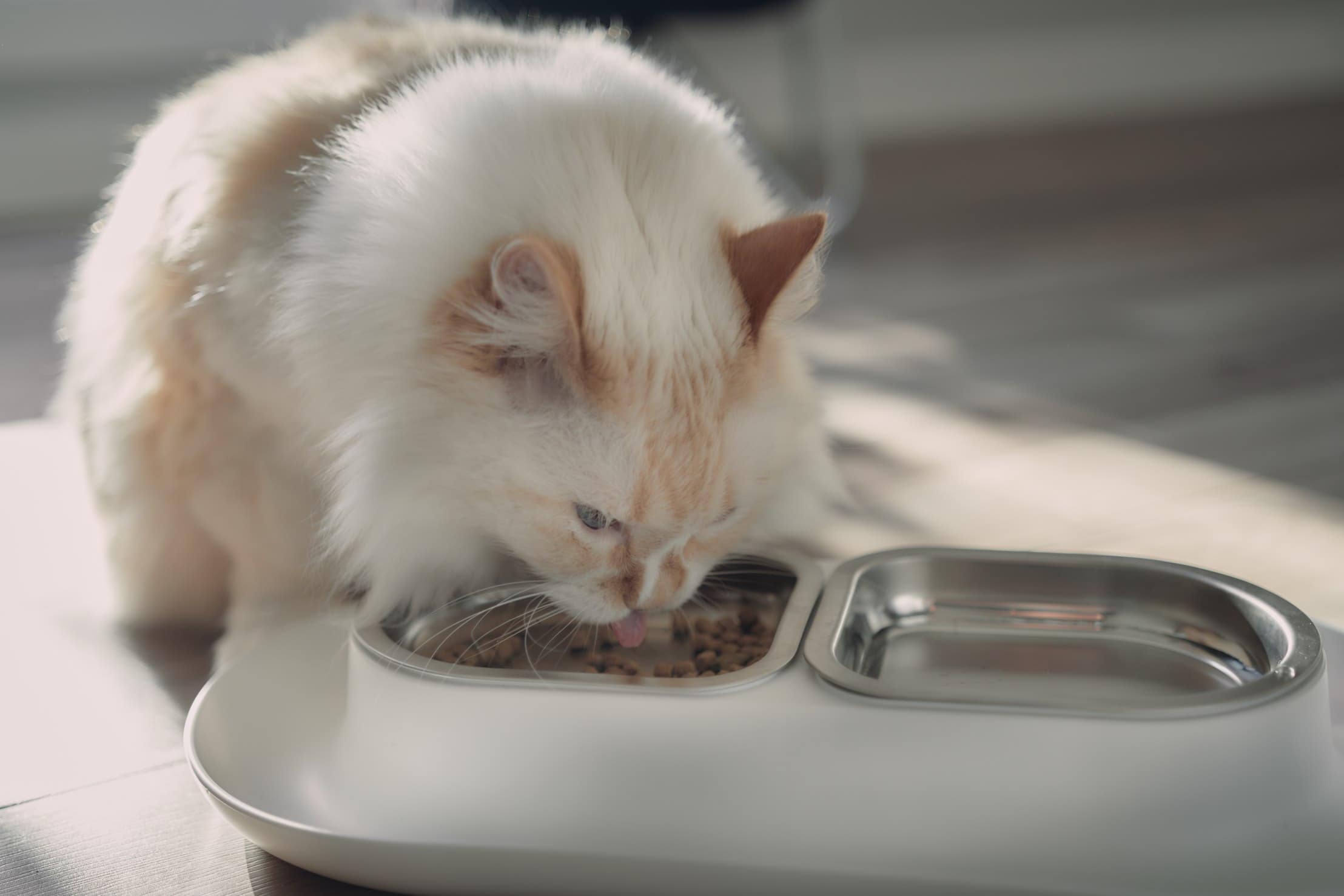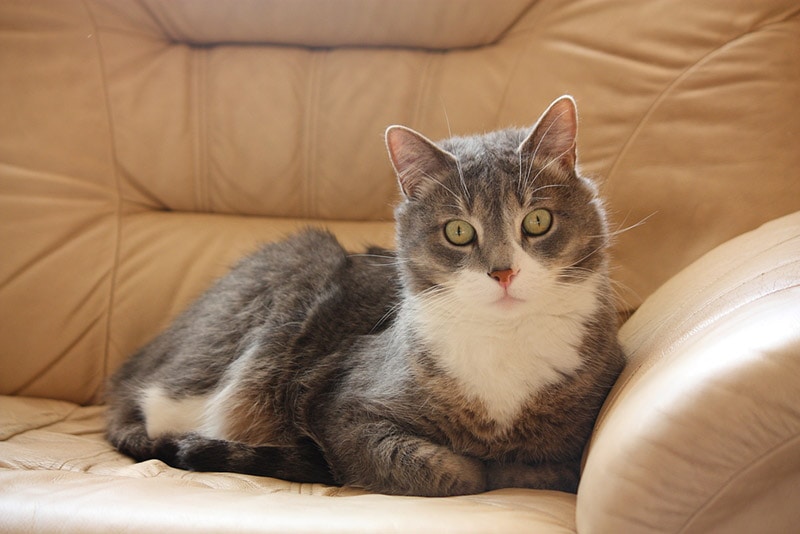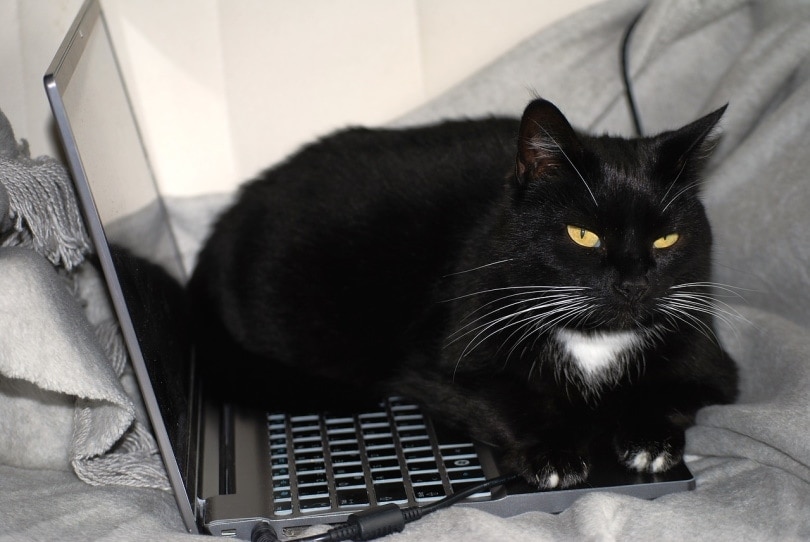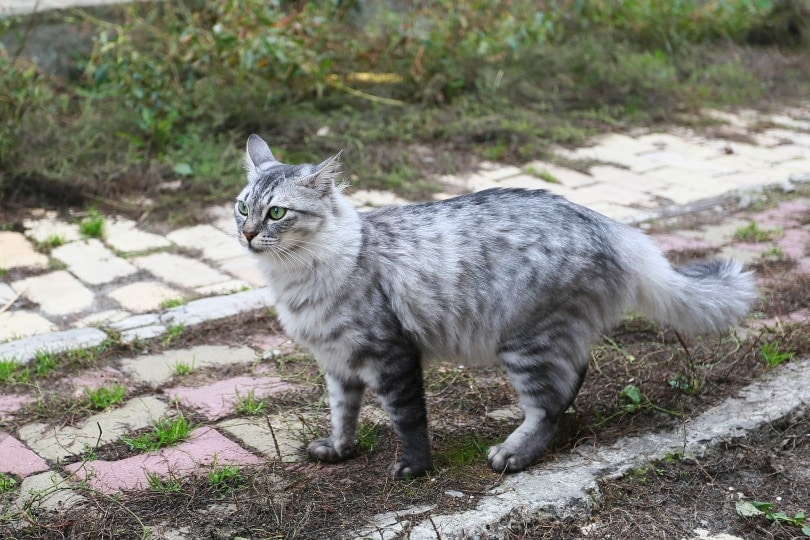Do Cats Poop Less on Wet Food? Vet-Approved Digestive Facts
Updated on
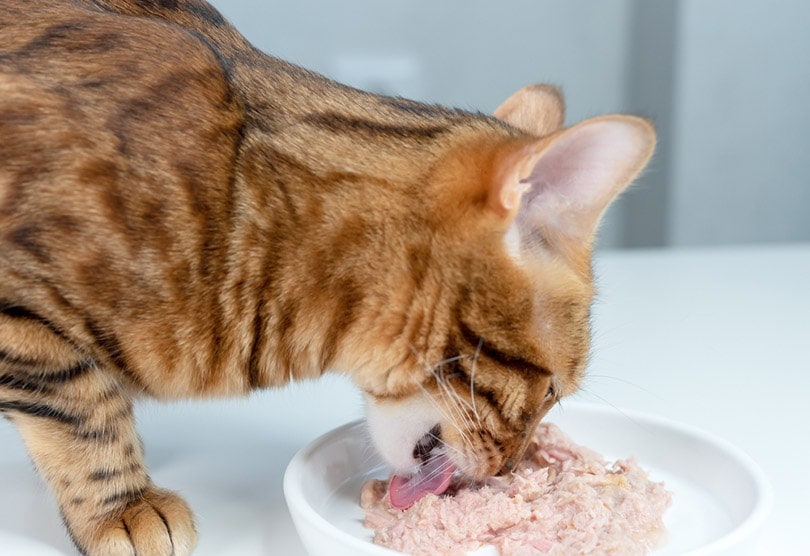
Click to Skip Ahead
Maybe your cat eats dry food and you have to clean the litter box way too often. Or maybe you have just recently switched to feeding your cat wet food and are wondering what to expect. Either way, you may be wondering if feeding your cat wet food will cause him to poop less.
The answer may surprise you. Cats do tend to poop less when they’re given wet food. This has mostly to do with the nutrients found in wet food vs. dry food and the way your cat’s body absorbs and digests them.
If you have just recently switched to wet food and have noticed your cat pooping less, this is normal. Feeding your cat wet food can also reduce how often you clean the litter box. Continue reading to learn how wet food affects your cat’s pooping habits as well as find the answers to any other questions you may have.
Why Does Wet Food Cause Cats to Poop Less?
Essentially, wet food causes cats to poop less due to the type of ingredients and nutrients that are found in it versus that of dry food. Cats are obligate carnivores, which means that over 70% of their diet should consist of meat.
In the wild, cats primarily eat rodents and other small animals such as birds and lizards. The meat from these animals contains mostly protein and fat, both of which are essential for keeping your cat’s muscles and organs functioning properly.
Unlike other animals, even dogs, and cats very rarely eat plants. However, dry cat food contains lots of plant ingredients, while wet cat food does not. But what does this have to do with how much your cat poops? For a better understanding of how the two types of foods compare, let’s look at each one separately.
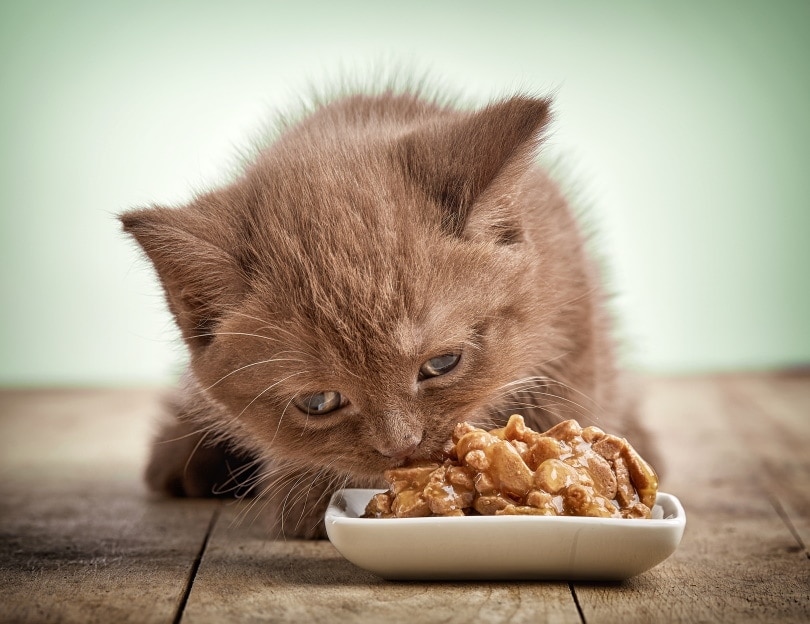
1. Dry Food
If your cat has always eaten mostly dry food, you have probably noticed that he produced a lot of poop. That’s not to mention the amount of poop produced if you have more than one cat. The reason why dry food causes cats to poop so much is that it contains a mixture of meat and plant-based ingredients.
Low Moisture
Dry food contains protein and fat that comes from meat ingredients and fiber that comes from plant ingredients. Plus, most dry cat foods contain only a very small percentage of moisture, usually only about 10%–12%.
Meat is an essential part of your cat’s diet and provides most of the nutrients that your cat needs. However, plants are often added to dry food for added nutrients that your cat can’t get from meat, but also to make the food more easily digestible since dry food has less moisture than wet food.
Higher in Fiber
But, in addition to providing vitamins and minerals, the main nutrient that plants are high in is fiber. As humans, we need fiber to not only help lower our cholesterol and control our blood sugar but also to help regulate our bowels. Fiber has the same effect on your cat’s body, but the difference is that, unlike humans, most cats don’t need fiber in order to maintain a healthy diet and lifestyle.
With that being said, there are some instances in which fiber can be beneficial to cats, including helping with diarrhea, constipation, or other digestive issues as well as certain conditions such as feline diabetes or obesity. You may even notice your cats munching on grass if they go outside. But, in addition to causing them to poop more, too much fiber can also cause problems for cats since they don’t really need it in order to survive.
Many Plant-Based Ingredients
Dry cat foods also come in many different varieties with many different ingredients. Ideally, any cat food you buy should have meat listed as at least the first ingredient. But, some less expensive dry cat foods have some type of plant material listed as the first ingredient. You will notice even more poop if plants are the first ingredient instead of meat.
2. Wet Food
On the other hand, wet cat food is made primarily of meat and contains only a small percentage of plant-based ingredients, if any. That means that the main nutrients provided by wet food are protein and fat, which is more like what a cat would normally eat in the wild.
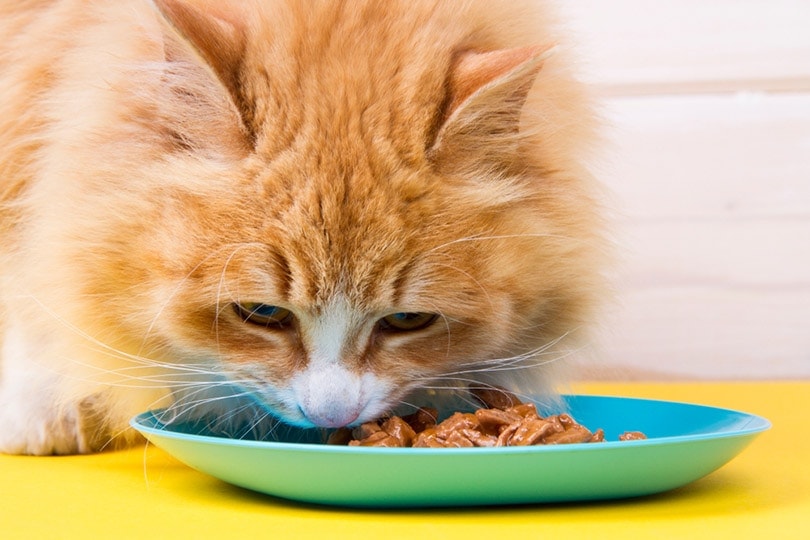
High Moisture Level
Plus, wet cat foods have a much higher moisture content than dry cat foods. Most wet cat foods have a moisture content that averages around 75%-78%. Having a high moisture content not only better reflects the natural diet of cats, it also helps the food be more easily digested.
More Appropriate Nutrients
The nutrients in wet food are also more easily absorbed by your cat’s body since it is similar to what they would actually eat. Because the nutrients are more easily absorbed and the high moisture content makes the food more easily digestible, it eliminates the need for high amounts of fiber in wet cat food.
Speaking of nutrients being absorbed, something we didn’t mention before is that a cat’s body isn’t set up to absorb all of the nutrients that plants provide. Again, this is because plants aren’t a part of their natural diet. Nutrients that aren’t absorbed are essentially pooped out since your cat could not digest them.
That’s why wet food causes less poop since most of the nutrients are naturally absorbed by your cat’s body. Dry food causes more poop since a lot of the plant ingredients can’t be absorbed and digested properly. You may also notice your cat regurgitating or vomiting more with dry cat food than with wet food.
Can Wet Food Make Cats Constipated?
Since wet food causes cats to poop less, you may be concerned that your cat may become constipated if you make the switch from dry food. Usually, this isn’t the case, and giving your cat wet food can actually be a way to prevent constipation in cats because it increases their water intake.
However, it’s important to remember that any change in diet can affect the digestive system, including constipation and/or diarrhea. It’s natural for a cat to poop significantly less or more than normal after changing his diet, but in most cases, this is temporary and will resolve in a few days as your cat’s body gets used to the new diet.
But if you’re wanting to switch to wet food and are concerned about your cat becoming constipated, you can always introduce the wet food to him slowly. For example, you can start by only giving him part of a can along with his dry food.
Then, gradually increase how much wet food your cat gets and decrease how much dry food he gets until he is only eating wet food. Doing this will allow your cat’s body to adjust to the wet food slowly, so it won’t be as dramatic of a change as if you just eliminated dry food all at once.
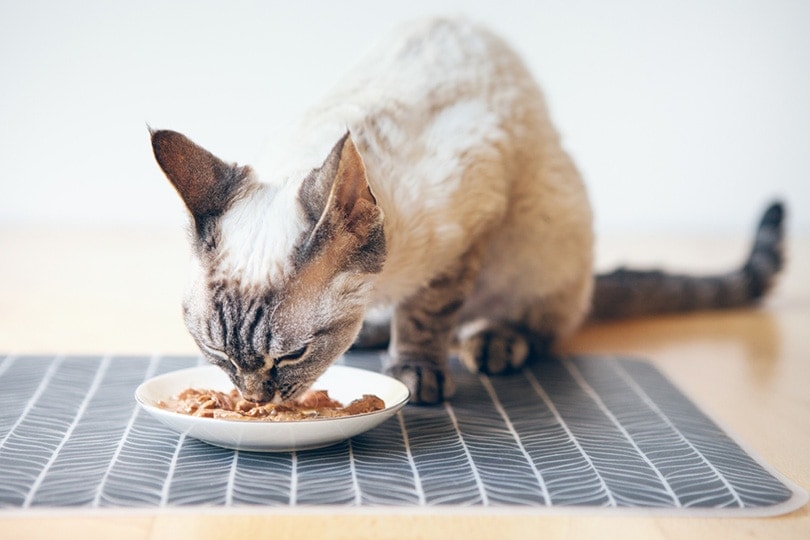
How Often Should a Cat Poop?
Even if you aren’t concerned about your cat developing constipation or diarrhea, it’s still a good idea to monitor his poop especially after switching food. A cat’s poop can tell a lot about his health, including how often he does poop and what the poop looks like.
Most cats will poop at least once a day, although twice a day is not uncommon, especially with certain types of dry food. In healthy cats, the poop will also be dark brown in color and have a texture that is not hard but not too soft either.
With that being said, any sudden changes to your cat’s poop, including in frequency, color, and texture, that aren’t due to a change in diet could signal that something is wrong with your cat. For example, diarrhea could be caused by a food allergy especially if you’ve recently changed your cat’s diet. But, it could also mean that your cat has worms or another digestive issue if you haven’t changed his diet.
Constipation can also be caused by a change in diet, especially if your cat isn’t consuming as much fiber as he used to. But, it can also be caused by a kidney problem or a problem with your cat’s colon, among other things. If you notice a change in your cat’s poop that isn’t due to changing his diet, or you did change his diet but the poop doesn’t return to normal in a few days, it’s a good idea to see your veterinarian just in case something is wrong.
While providing our feline companions with high-quality food is paramount, selecting the right food and water bowl is equally important. The modern yet practical design of our Hepper NomNom Cat Bowl combines cat-catered features, like whisker-friendly shallow dishes and slight elevation, with a contemporary style aimed at protecting your floors from messy eating and drinking. The NomNom is entirely dishwasher safe and was thoughtfully created with your cat’s health and well-being in mind.
Conclusion
Wet food mimics a cat’s natural diet, so it is more easily absorbed by your cat’s body. It also contains less fiber than dry food does, which means less pooping will occur as well. If you think your cat poops too much, you can try making the switch to wet food. If you did switch to wet food already and notice that your cat is pooping less, do not worry as this phenomenon is totally normal.
Related Reads:
Featured Image Credit: Svetlana Rey, Shutterstock
